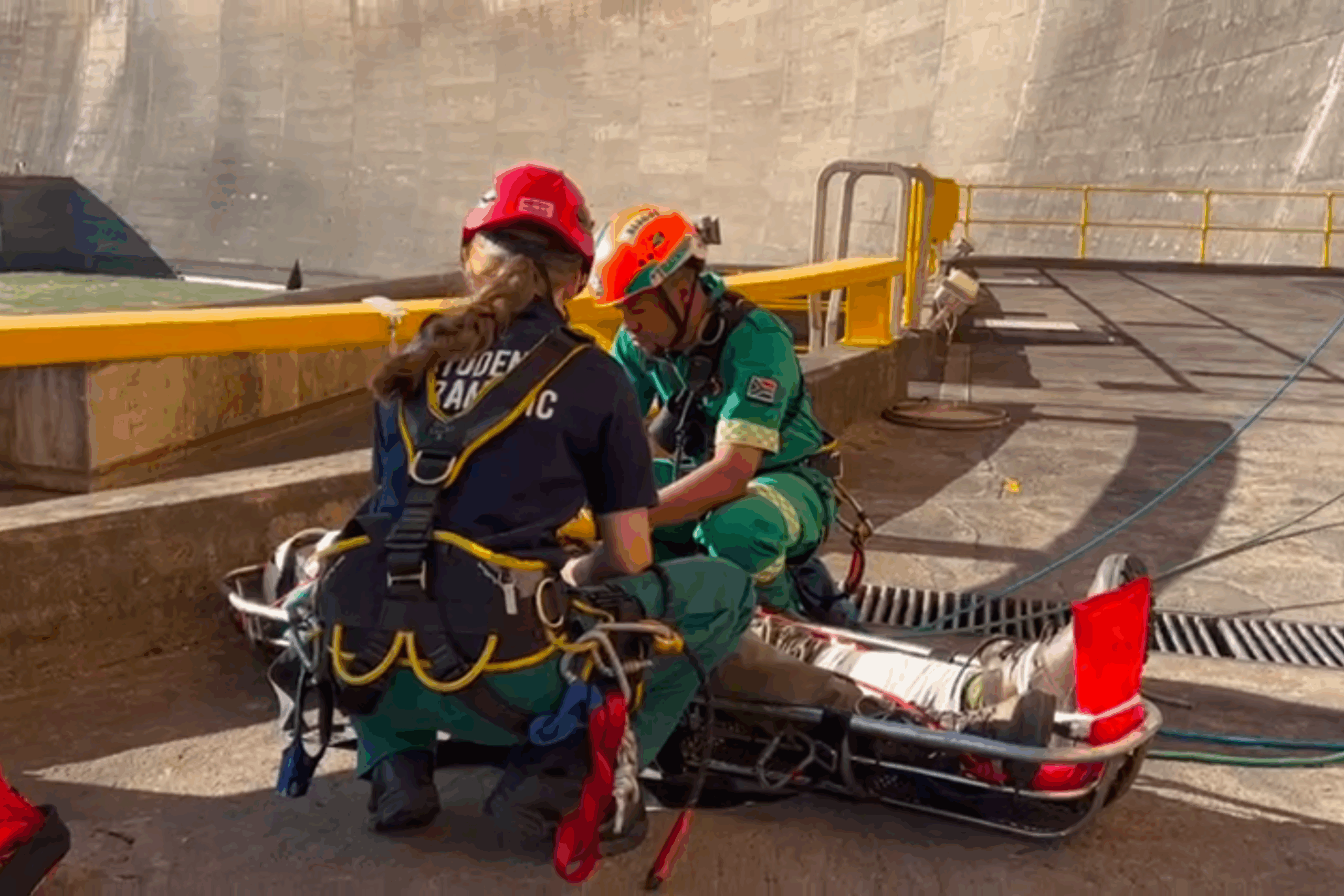Globally, multinational businesses across the construction industry seek opportunities to expand their business. This often involves the development of projects in rural and remote sites across Africa where there needs to be more development. The remote nature of these locations often significantly impacts the Emergency Medical Services (EMS) that are available, which are necessary to ensure the Health Management of the project and workforce. This poses several critical challenges when providing high-quality EMS in these locations. We deep dive into these challenges and how to overcome them below.
Emergency Medical Services Management Challenges on Remote Construction Sites
Remote construction sites across Africa have a set of unique emergency management challenges that need to be managed when implementing emergency medical services in Africa. These challenges include infrastructure, medical resource limitations, and staffing challenges, which we discuss below.
Infrastructure Challenges
One of the most significant challenges remote construction sites pose for emergency medical services is a need for more infrastructure. Remote construction sites are often located in areas where infrastructure is nonexistent. This includes tarred roads, landmarks, buildings, and more, making it increasingly challenging for emergency medical services to respond to medical emergencies promptly.
Another challenge is the need for more medical facilities on these remote sites. There are often no clinics or hospitals nearby, meaning that emergency medical services must bring all the necessary medical equipment and supplies. Emergency medical services, therefore, need to be completely prepared with the right equipment to handle a wide range of medical emergencies.
In many cases, this is only sometimes possible, and the emergency medical services must rely on improvised facilities or make do with what they have. In the case of life-and-death emergencies, this can significantly impact the patient outcome and may result in several casualties.
The question now needs to be asked is how we can solve these challenges. The answer often lies in developing fully functional onsite medical facilities. This removes the challenges related to navigating rough terrain and unmaintained roads. In this way, emergency medical services are equipped on-site to handle all medical emergencies and provide swift intervention, ultimately saving lives.
Medical Resource Limitations
Access to medical resources is often limited in these remote African areas. Without access to the right medical resources, emergency medical services will not have the supplies and equipment needed to provide quality patient care, which will have critical implications on patient treatment and outcomes. If this is the case, several different scenarios can play out. For example, patients who cannot be treated must be moved to the following upgraded medical facilities outside the construction site, which may result in delayed treatment, thereby increasing the risk of death.
To address this challenge, emergency medical services must be well-equipped with all necessary medical supplies and equipment on the construction site. This requires effective risk assessment processes and plans to be in place to indicate the medical supplies needed to provide high-quality care for all employees effectively. It may also be necessary to have another team of medical professionals on standby to provide additional support if required.
Medical Staffing Challenges
Inadequate staffing is another challenge affecting emergency medical services and the health of employees working at these remote locations. Due to the remote nature of these locations, access to quality healthcare professionals is limited. In this way, staffing a medical facility with the right skill sets is challenging. The EMS services staff required for this position must have the right kind of experience, especially where treating injuries resulting from falls or accidents involving heavy machinery is concerned.
How do we solve this challenge? The answer lies in training. Training is vital to helping emergency medical service staff provide the best care possible. They must develop the skills to manage unique medical emergencies on remote construction sites. Additionally, recruiting and deploying a sufficient number of medical professionals to remote construction sites will help ensure the availability of trained medical staff to respond to medical emergencies promptly and effectively.
Future EMS Considerations
As technology continues to advance, numerous emerging trends and technologies have the potential to significantly impact Health Management in relation to EMS on remote construction sites. Telemedicine is one such example. This new-age form of medical care is gaining popularity as it provides advanced accessibility and access to medical care. This technology could allow for specialist care and consultation within the context of emergency medical services in remote locations.
State-of-the-art medical equipment also enhances the quality of emergency medical services available on these remote sites. For example, ultrasound equipment can improve the accuracy of treatment and care.
The above is just the tip of the iceberg regarding what is possible from an emergency medical services technology standpoint. With innovations continually being developed, there is always more opportunity to improve emergency medical services in remote and outlying areas. The development of these technologies does, however, need to be supported by healthcare providers, governments, and other stakeholders to ensure that this is something that remains a priority.
Conclusion
There is no doubt that emergency medical services face many challenges in remote locations and construction sites across Africa. With the lack of infrastructure, limited medical resources, and inadequate staffing, the cards are stacked against the emergency medical services. These challenges can be solved by developing risk assessment plans, constricting the right kinds of medical facilities, training medical staff effectively, and utilizing innovative technology. This is a necessary focus considering that emergency medical services is vital to the health and well-being of the staff employed on these construction sites.


